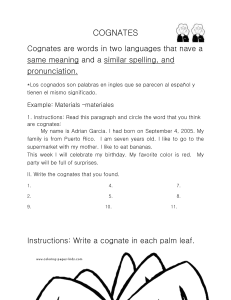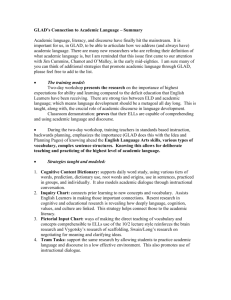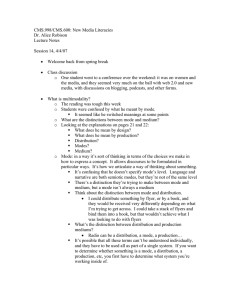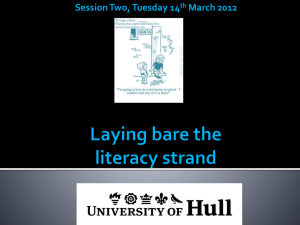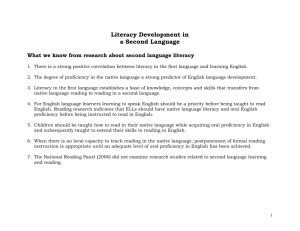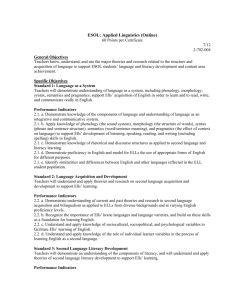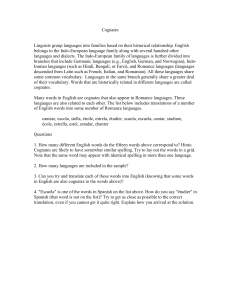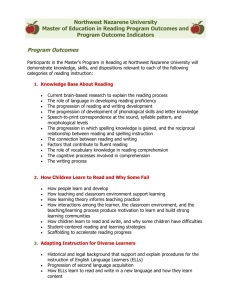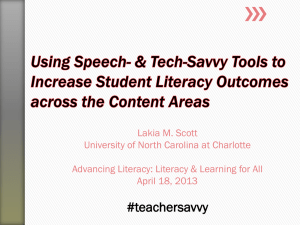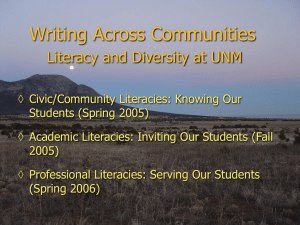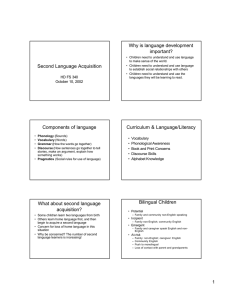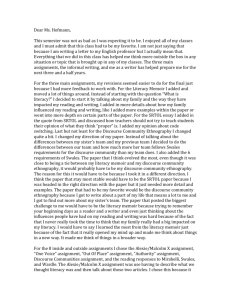Science Support Strategies for ELLs
advertisement
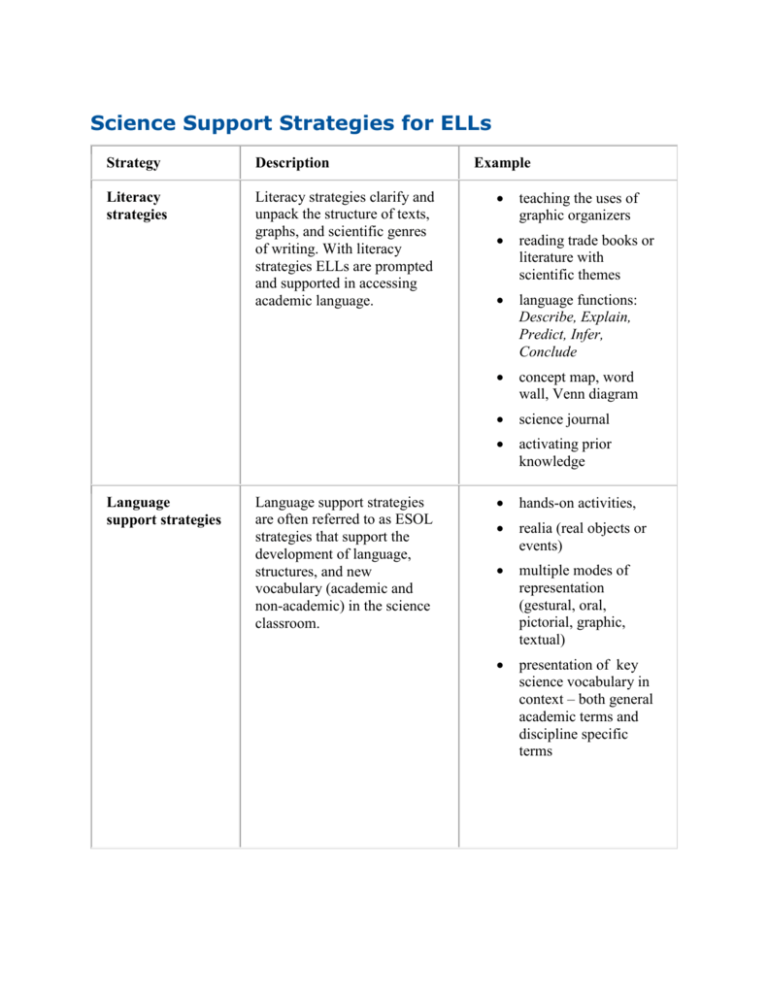
Science Support Strategies for ELLs Strategy Description Literacy strategies Literacy strategies clarify and unpack the structure of texts, graphs, and scientific genres of writing. With literacy strategies ELLs are prompted and supported in accessing academic language. Language support strategies Language support strategies are often referred to as ESOL strategies that support the development of language, structures, and new vocabulary (academic and non-academic) in the science classroom. Example teaching the uses of graphic organizers reading trade books or literature with scientific themes language functions: Describe, Explain, Predict, Infer, Conclude concept map, word wall, Venn diagram science journal activating prior knowledge hands-on activities, realia (real objects or events) multiple modes of representation (gestural, oral, pictorial, graphic, textual) presentation of key science vocabulary in context – both general academic terms and discipline specific terms Discourse strategies Home language support Home-culture connections Discourse strategies involve tools and protocols that enable student-to-student communication to promote authentic sense-making in academic contexts. This strategy involves building on and making use of students' home language to support science learning in English. It includes teaching students how to create linguistic and cultural bridges between school science and the home to capitalize on emerging bilingualism. Students have historical, socio-cultural and community based "ways of knowing" and making sense of science. These connections allow teachers to access and build on the assets which the students bring from their homes, communities and locallybased natural settings. expertise groups (jigsaw) purposeful turn and talk monitoring tone and speed of speech collaborative group protocols and roles introduce key science terminology in both languages making contrasts explicit (use of language as well as words and structures) highlight cognates as well as false cognates in both language allow code-switching, opportunities for bilingual communication in the classroom students' cultural artifacts community resources (e.g., local scientist) place-based socio-political action funds of knowledge (a passed down family skill conceptual web allowing codeswitching


